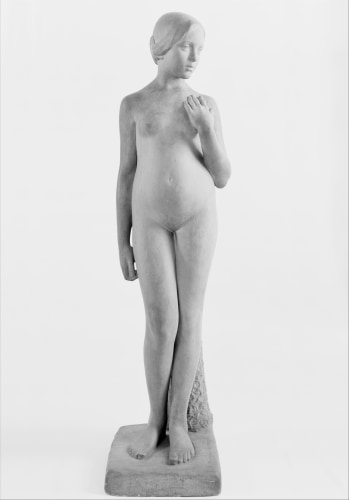Edith Woodman Burroughs

At the Threshold, 1912
Edith Woodman Burroughs (1871 – 1916)
Edith Woodman Burroughs is described by sculptor Lorado Taft as one of the few American sculptors to develop an original style at the beginning of the century. She simplified the forms in her sculpture under the influence of Aristide Maillol, and would probably have gone further in that direction, but her early death abruptly ended her career.
Born in Riverdale, New York, Edith Woodman was already studying at the Art Students League with Augustus Saint-Gaudens and Kenyon Cox at the age of fifteen. At eighteen, she was supporting herself working on figures for churches, and teaching.
In 1893, while in England, she married the painter Bryson Burroughs (later the curator of paintings at New Yorks Metropolitan Museum of Art). She studied sculpture with Injalbert and painting with Luc Olivier Merson in Paris for two years. During travels in France, she was greatly moved by the Gothic sculpture on the cathedrals of Chartres and Amiens. Working in the richly detailed neobaroque style after her return, she won the Shaw Memorial Prize for Circe at the National Academy in 1907. It was during a return trip to Paris in 1909 that she came under the influence of Maillol, an important early figure in the modern movement.
Burroughs work is a departure from the lingering baroque style of most of her Beaux-Arts-trained contemporaries. “At the Threshold” (1912) has a grave, tender quality and compactness that was just beginning to be seen in American sculpture.
Burroughs was included in the Armory Show of 1913, won a silver medal for sculpture at the Panama-Pacific Exposition, and had a major exhibition of thirty-nine works in New York. The National Sculpture Society held a commemorative exhibition at her death.
(Information for the biography above is based on writings from the book, “American Women Artists”, by Charlotte Streifer Rubinstein.)
Biography from the Archives of AskART